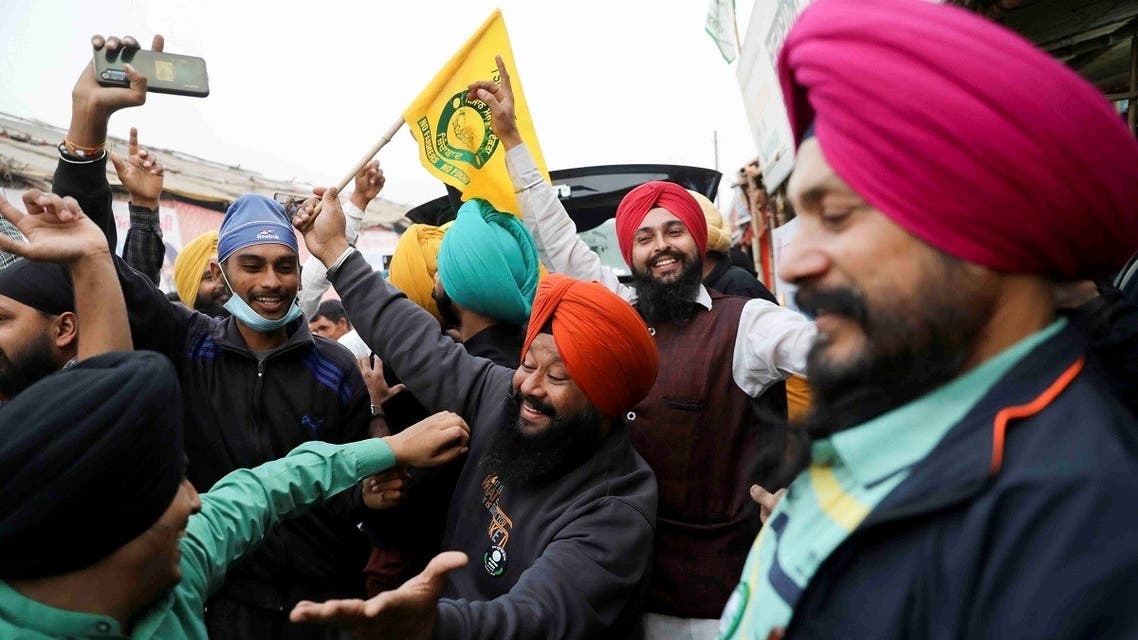Two Edmonton natural food stores expect some products will temporarily run out this week as distributors find ways to move their goods around B.C.’s flooded transportation routes.
Lauren Boothby

© Provided by Edmonton Journal
Michael Kalmanovitch, owner of Earth's General Store in Edmonton, expects to be out of produce this week due to supply chain issues complicated by landslides and flooding in British Columbia.
Managers for Whyte Avenue businesses Blush Lane Organic Market and Earth’s General Store say their stocks of organic produce, milk and some other goods will be depleted this week. Big companies like Save-On-Foods haven’t reported the same problem.
Unlike larger chains that are regularly stocked from other parts of North America, some small businesses focusing on organic and natural foods are supplied directly from warehouses in the Vancouver area. Scott Bladon, Blush Lane’s director of operations, expects the local natural food industry will struggle for a short period of time until shipment plans are sorted out.
“Conventionally, (big grocery chains) have large warehouses that are local in the city so they should be good to go because they get trucks direct from the U.S. to their warehouses, where we don’t,” he said. “We’re going to see some holes in our shelves. We’re going to replenish them as quick as we can.
“I also want to urge people not to start hoarding food because that’s not going to help anyone.”
Bladon said organic produce will be the first to go as well as some brands of milk.
Earth’s General Store owner Michael Kalmanovitch thinks his supply of some organic fruits and vegetables will also run out temporarily as his B.C. suppliers warned shipments would be delayed .
“If our sales continue right now the way they are, we’re going to start seeing gaps on our shelves probably by (mid-week),” he said. “I’m accepting of it. It’s beyond my control, and I can’t create any more cauliflower than we have on the shelf.”
Both B.C. Premier John Horgan and the B.C. Trucking Association have urged the public to stay calm. Panic buying , not the flooding disaster, is causing much of B.C.’s current shortages according to the Retail Council of Canada.
Jude Groves, chair of the Alberta Motor Transportation Association, says he’s confident the industry will quickly find workarounds and adapt.
“There will absolutely be impact in terms of delays but we are working on options,” he said. “The last 24 months have just reinforced how critical our supply chain is.”
Managers for Whyte Avenue businesses Blush Lane Organic Market and Earth’s General Store say their stocks of organic produce, milk and some other goods will be depleted this week. Big companies like Save-On-Foods haven’t reported the same problem.
Unlike larger chains that are regularly stocked from other parts of North America, some small businesses focusing on organic and natural foods are supplied directly from warehouses in the Vancouver area. Scott Bladon, Blush Lane’s director of operations, expects the local natural food industry will struggle for a short period of time until shipment plans are sorted out.
“Conventionally, (big grocery chains) have large warehouses that are local in the city so they should be good to go because they get trucks direct from the U.S. to their warehouses, where we don’t,” he said. “We’re going to see some holes in our shelves. We’re going to replenish them as quick as we can.
“I also want to urge people not to start hoarding food because that’s not going to help anyone.”
Bladon said organic produce will be the first to go as well as some brands of milk.
Earth’s General Store owner Michael Kalmanovitch thinks his supply of some organic fruits and vegetables will also run out temporarily as his B.C. suppliers warned shipments would be delayed .
“If our sales continue right now the way they are, we’re going to start seeing gaps on our shelves probably by (mid-week),” he said. “I’m accepting of it. It’s beyond my control, and I can’t create any more cauliflower than we have on the shelf.”
Both B.C. Premier John Horgan and the B.C. Trucking Association have urged the public to stay calm. Panic buying , not the flooding disaster, is causing much of B.C.’s current shortages according to the Retail Council of Canada.
Jude Groves, chair of the Alberta Motor Transportation Association, says he’s confident the industry will quickly find workarounds and adapt.
“There will absolutely be impact in terms of delays but we are working on options,” he said. “The last 24 months have just reinforced how critical our supply chain is.”
Strained supply
All major routes connecting B.C.’s interior with the Lower Mainland were cut off by extreme flooding and mudslides when an atmospheric river dumped a record-breaking amount of rain in the region. Some pipelines were also turned off .
Repairs to damaged and blocked roads and railways could take weeks or months to fix, and as of Thursday, many trucks had begun to be re-routed from Vancouver through the United States to get around the damage.
Edy Wong, associate dean international for the Alberta School of Business, said Alberta relies on these routes to bring in goods from Asia via the Port of Vancouver, and this situation will strain the supply chain . He expects multiple industries in Alberta will struggle to keep some goods in stock for the holidays.
“This is a sort of like a black swan event, perfect-storm situation for the supply chain,” he said. “Some firms might not get the product in time for the Christmas season and that’s something that’s worrying for some companies.”
Consumer goods and construction materials could be affected and prices may go up, Wong said.
Justin Brattinga, press secretary for Jobs, Economy and Innovation Minister Doug Schweitzer, said in an email Thursday the province’s first priority is helping B.C.
“We expect that there may be some short-term disruptions to the supply chain but we are working with our stakeholders and counterparts across all levels of government to limit any delays.”
No grocery shortages at big chains
Grocery chains and local food distributors contacted by Postmedia do not expect customers will see a noticeable difference on the shelves in Edmonton.
Save-On-Foods expects a minimal impact to deliveries heading to Alberta stores. In an email, the company urged customers to maintain their normal shopping habits: “Overbuying puts a strain on our ability to get our shelves re-stocked as quickly as we would like … we encourage everyone to be patient and to be kind to each other and to our team members.”
Donavan Tong, co-owner of Wan Da Wholesale, said some suppliers are already re-directing shipments through the United States. He said he isn’t concerned, though he might run out of a few brands of noodles temporarily.
“(It’s) just a probably week or two shortage — don’t panic,” Tong said.
Bulk Buy Wholesale also doesn’t expect to be affected as most of its poultry comes from Ontario and Alberta, and its suppliers haven’t issued warnings. Costco Canada declined to comment.
— With files from Matt Scace
lboothby@postmedia.com
@laurby




 © (Pexels) Today's workers are rejecting management hierarchies and want more autonomy and teamwork.
© (Pexels) Today's workers are rejecting management hierarchies and want more autonomy and teamwork.














